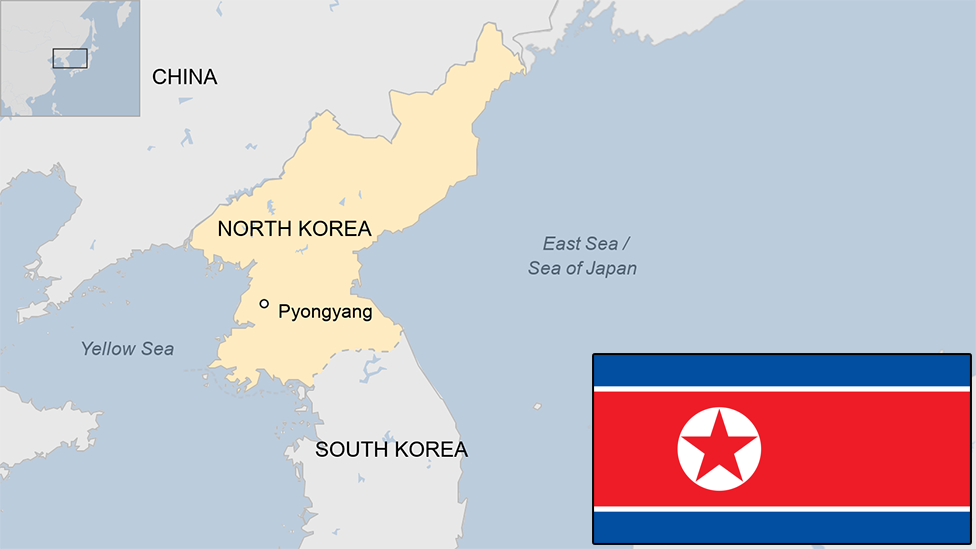North Korea Defence Chief Hyon Yong-chol 'executed'
- Published
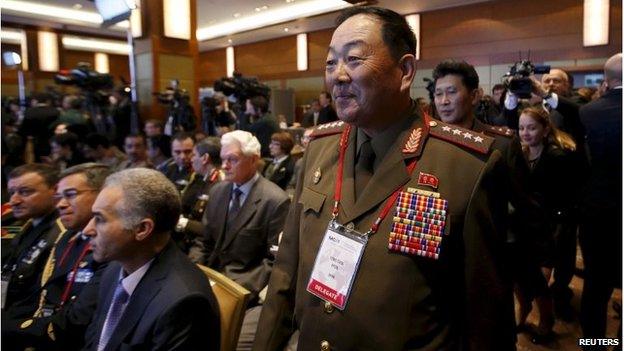
Hyon Yong-chol spoke at an international security conference in Moscow last month
North Korea's Defence Minister Hyon Yong-chol has been executed for showing disloyalty to leader Kim Jong-un, South Korea's spy agency has told parliament.
MPs were told Mr Hyon was killed on 30 April by anti-aircraft fire in front of an audience of hundreds, the Yonhap news agency reports.
It said Mr Hyon had fallen asleep during an event attended by Kim Jong-un and had not carried out instructions.
South Korea said a senior military officer was also killed.
The news comes weeks after the reported execution of 15 senior officials.
Among them were two vice-ministers who had challenged Mr Kim over his policies and members of an orchestra, the South's National Intelligence Agency (NIS) said at the time.

Mr Hyon (right, with Kim Jong-un) had been a general since 2010
Analysts told the BBC that while reshuffles of officials were commonplace in North Korea, the execution of a figure as close to Mr Kim as Mr Hyon was surprising and could give cause for concern about the country's stability.

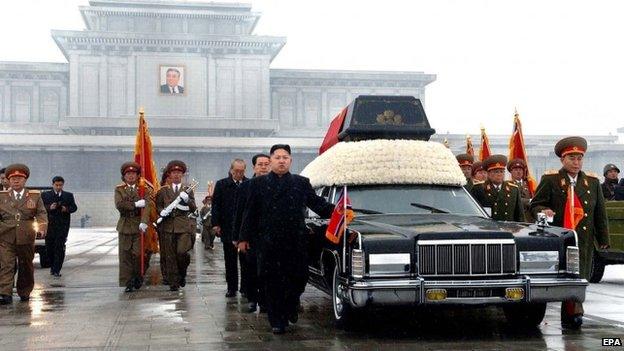
Of the seven pallbearers at former leader Kim Jong-il's 2011 funeral, apart from Kim Jong-un, all have either been executed, have lost their jobs or have not been seen in some time
Analysis: Stephen Evans, BBC News, Seoul
Hyon Yong-chol, as defence minister, was as close to Kim Jong-un as it is possible to get.
Such a public and brutal method of execution as obliteration by anti-aircraft gun would emphasise the cost of disloyalty.
Intelligence reports always have to be treated with scepticism but, in this case, the claims of the South Korean spy agency will be easy to verify. If they are not true, the defence minister would appear again in public.
Earlier, the South Korean agency said that senior officials were being executed at the rate of one a week. It all adds up to a picture of a leader in Pyongyang who feels very insecure and who is dangerous in his insecurity.
'Execution' highlights Kim's insecurity

Mr Hyon is believed to have been a general since 2010, though little is known about him. He served on the committee for late leader Kim Jong-il's funeral in December 2011, an indication of his growing influence.

Kim Jong-un has conducted a series of purges of officials since coming to power
He was appointed defence minister last year. NK News said he last appeared in state media, external a day before the alleged execution date.
Last month, he travelled to Moscow to represent North Korea at a regional security conference.
Mike Madden of North Korea Leadership Watch told the BBC that if true, the execution was "entirely a demonstration of power and authority".
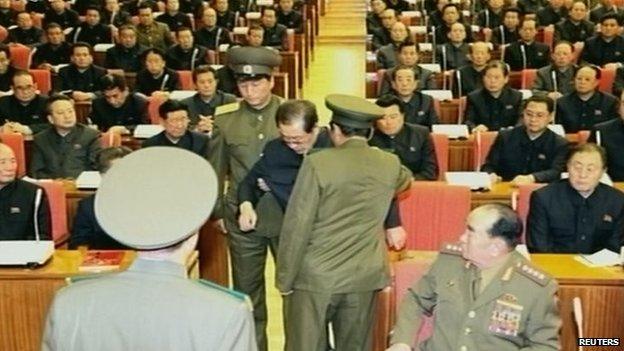
Kim Jong-un's uncle, Chang Song-thaek, is the most high profile official to have been executed under his rule
"This is indicative of Kim Jong-un's impulsive decision-making", he said, and a sign of a leader who is "not feeling secure".
Also executed, according to South Korea, was Ma Won-chun, a lieutenant-general and architect who masterminded the building of a new ski resort in 2013.
Reports had said Mr Ma was in charge of North Korea's finances.
Mr Kim has conducted a series of purges of close officials since becoming North Korea's leader.
The most notable was his uncle, Chang Song-thaek - once the country's second-most powerful figure.
He was arrested in December 2013 in front of a party meeting, found guilty of treason and immediately executed.
There have been reports before of North Korea using heavy weaponry in executions, including mortars.
Last month, a rights group released satellite images, external it said showed unusual activity on a small arms range at the Kanggon army training area in October 2014.
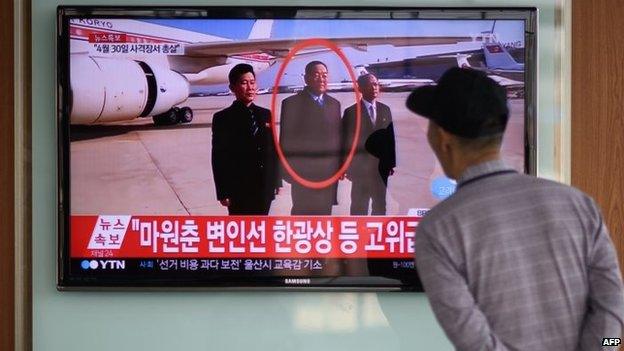
The US-based Committee for Human Rights in North Korea said the images showed large weaponry facing a very close target, a viewing area and several passenger vehicles.
It said the "most plausible explanation" for the image was a "gruesome public execution" by anti-aircraft fire.
- Published13 May 2015
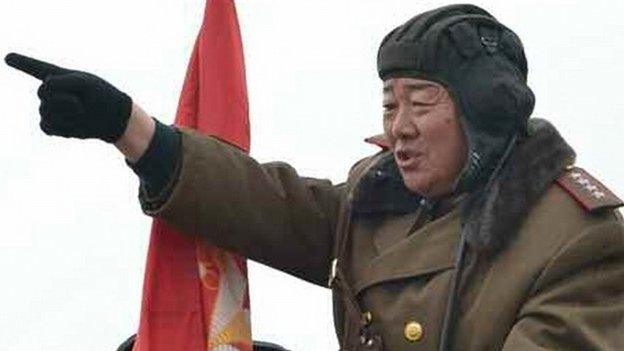
- Published13 May 2015
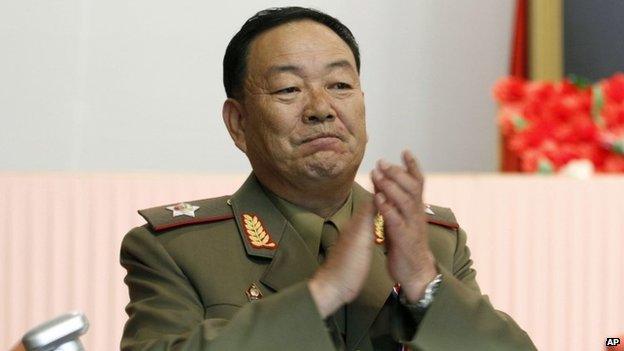
- Published13 May 2015
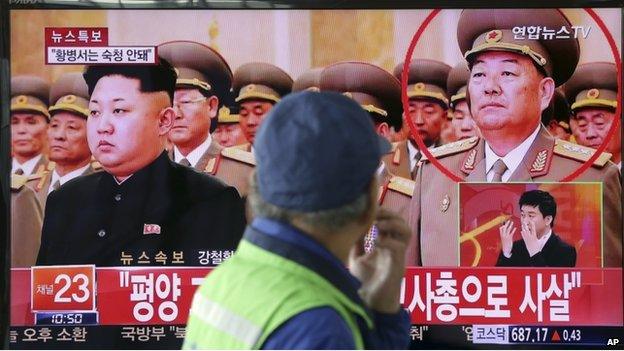
- Published18 July 2012
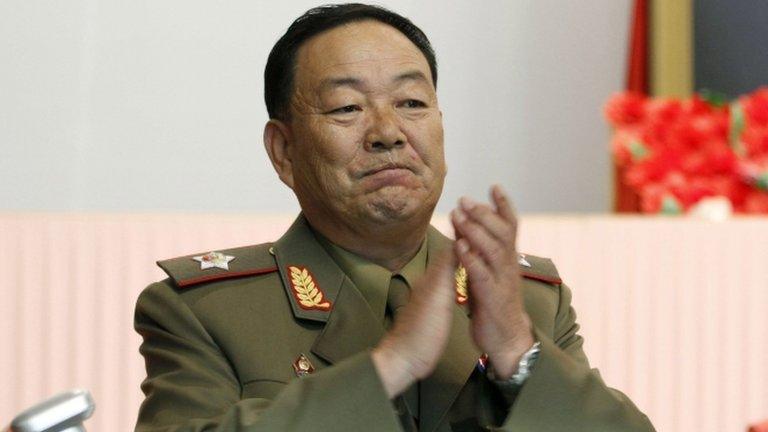
- Published13 December 2013
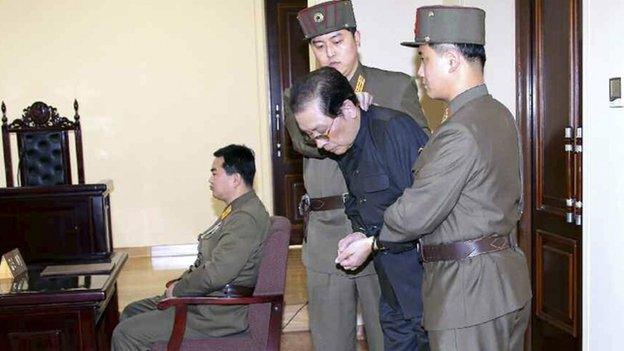
- Published19 July 2023
